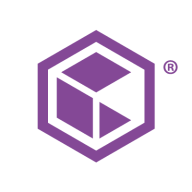

Commvault Cloud and NetApp Cloud Volumes ONTAP compete in the cloud data management and backup category. NetApp appears to have the upper hand due to its superior storage management and optimization features.
Features: Commvault Cloud provides extensive data backup and recovery, strong cloud integration, and supports diverse workloads and environments. NetApp Cloud Volumes ONTAP is known for storage optimization, data deduplication, and disaster recovery using SnapMirror technology, making it excellent for data management and protection in multi-cloud and hybrid environments.
Room for Improvement: Commvault Cloud needs to enhance its user interface and documentation, and it requires more seamless cloud integrations. NetApp Cloud Volumes ONTAP should work on improving high availability features, minimizing upgrade complexities, and enhancing monitoring capabilities.
Ease of Deployment and Customer Service: Commvault Cloud offers comprehensive deployment options across private, public, and hybrid clouds and is praised for quick customer service response times. NetApp Cloud Volumes ONTAP supports diverse deployment models but has a slightly complex initial setup, though customer service feedback is generally positive.
Pricing and ROI: Commvault offers flexible licensing models with competitive pricing, providing notable ROI through infrastructure and operational cost savings. NetApp's initial license and setup costs are substantial, but its pricing aligns with its features, realizing ROI through effective data protection and reduced storage expenses.
The number of people who know Commvault Cloud is lesser compared to Veeam.
Customer support has very closed departments, requiring us to shuffle between them to get one thing done because representatives have limited accessibility.
I have not faced any downtimes with Commvault Cloud.
Commvault Cloud is highly stable, and I would rate it a ten out of ten.
I feel that the support is not yet up to the mark, with not enough professional engineers to provide assistance.
My opinion is that support is generally very good. There are instances where they take longer to respond or resolve issues, especially when customers have urgent needs, but ultimately, resolution is achieved.
Commvault Cloud is expensive, and there is room for the price to be 10-15 percent lower than what they are charging currently.
We can back up unlimited TBs due to our per node license.
Other features include endpoint solutions, integration with Office 365, ransomware protection, archival for long-term retention, and no ingress or egress charges.


Commvault Cloud is the ultimate cyber resilience platform built to meet the demands of the hybrid
enterprise. Beyond its core functionality of data backup and recovery across diverse workloads, including applications, databases, virtual machines, and files, Commvault Cloud stands out as a robust defense against ransomware. Going beyond backup, the platform integrates advanced data security features such as encryption, access control, and threat detection, safeguarding against unauthorized access and cyber threats.
With tools for data management, classification, and migration, businesses can optimize storage costs, enhance accessibility, and comply with regulations seamlessly. Boasting cloud integration with major providers like AWS, Azure, and Google Cloud, Commvault Cloud leverages the scalability and flexibility of the cloud for comprehensive data protection and management. The platform's automation capabilities streamline tasks, and its reporting and analytics features provide valuable insights into data usage, potential risks, and optimization strategies. Commvault Cloud is not just a security tool; it is a key component of cyber resilience, enabling organizations to not only protect against cyberattacks but also recover swiftly and minimize the impact of incidents. Elevate your cyber resilience strategy with Commvault Cloud.
NetApp Cloud Volumes ONTAP is an efficient storage management solution for managing and storing data in the cloud. It offers seamless integration with cloud providers, advanced data replication capabilities, and high data protection. With reliable performance, it is ideal for industries like healthcare and finance.
We monitor all Cloud Backup reviews to prevent fraudulent reviews and keep review quality high. We do not post reviews by company employees or direct competitors. We validate each review for authenticity via cross-reference with LinkedIn, and personal follow-up with the reviewer when necessary.